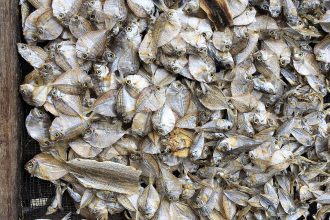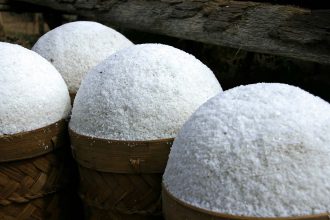
Everyday, 3 - 6pm at Kaum Jakarta
Whether it is a formal meeting, gathering, or just an excuse to put a positive turn to Jakarta’s traffic, Santai Sore aims to showcase Indonesia’s unique culinary and cultural heritage in a new, modern context.
Sit, relax, and enjoy a selection of Indonesia’s favorite snacks, best paired with Kaum’s selection of cocktails and mocktails.
For detailed menu and other offers:
reservations.jakarta@kaum.kaywmjm7f4-ewl6nqnrm652.p.runcloud.link
+62 21 22393256
CONTINUE THE JOURNEY

For many Indonesians, salted fish is one of life’s simple pleasures. We are perfectly content enjoying steamed rice, salted fish and a fiery sambal (chilli relish), devouring all with our right hand. Happiness is purely simple for most Indonesians!

Singaraja totally captivates us…”
Lisa Virgiano is brimming with enthusiasm for the local produce she and the Kaum culinary collective have discovered in Bali’s oldest port.

Rice is an essential commodity in Indonesia. Nowadays, most Indonesians think of rice not only as an indispensible component to any meal, but also as a kind of “sacred” staple. But has this forever been the case? Have Indonesians always consumed rice as part of their daily diet?

Chilli relish (sambal) is an imperative Indonesian condiment, served with almost every Indonesian dish. It arouses the appetite, ignites the senses, and complements the taste.

Bali has been part of the Asian trading network since the 15th century. Traders from Java brought rice and salt which could later be exchanged for cash crops, including pepper from Sumatra, spices from the Moluccas, and cotton from Bali.




